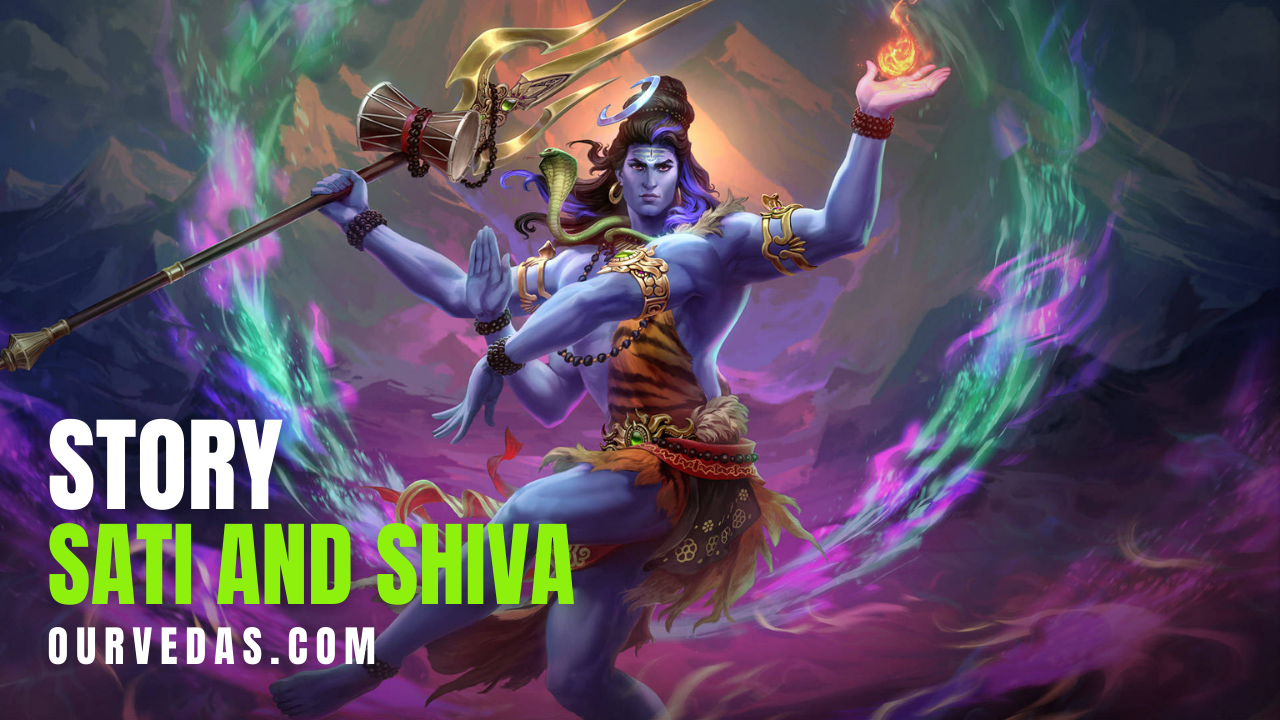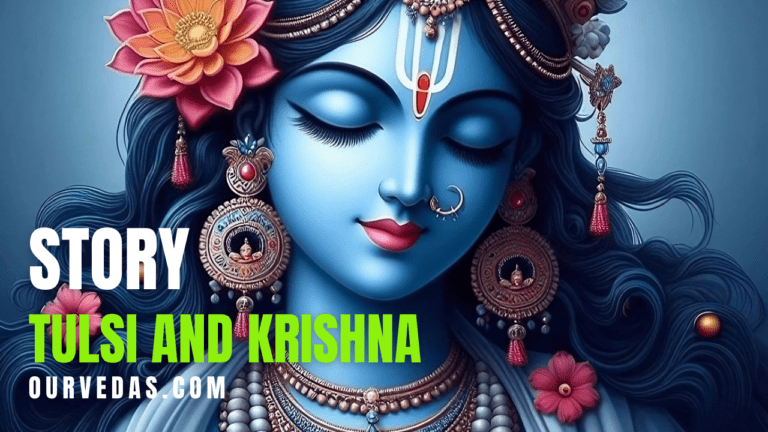The Sati and Shiva love story is an ancient Hindu tale of love, loss, and sacrifice. Lord Shiva is one of the prime deities in Hinduism. He dwells in the Himalayas, immersed in meditation and spiritual practices. He plays the role of destroyer. Though Shiva follows severe asceticism, Sati’s love and devotion for Shiva make him accept her love.
Sati and Shiva love Story
The story of Sati and Shiva illustrates not only the power of love and devotion but also teaches us the consequences of pride and ego. This story also highlights the cyclical nature of life and death in Hindu philosophy.
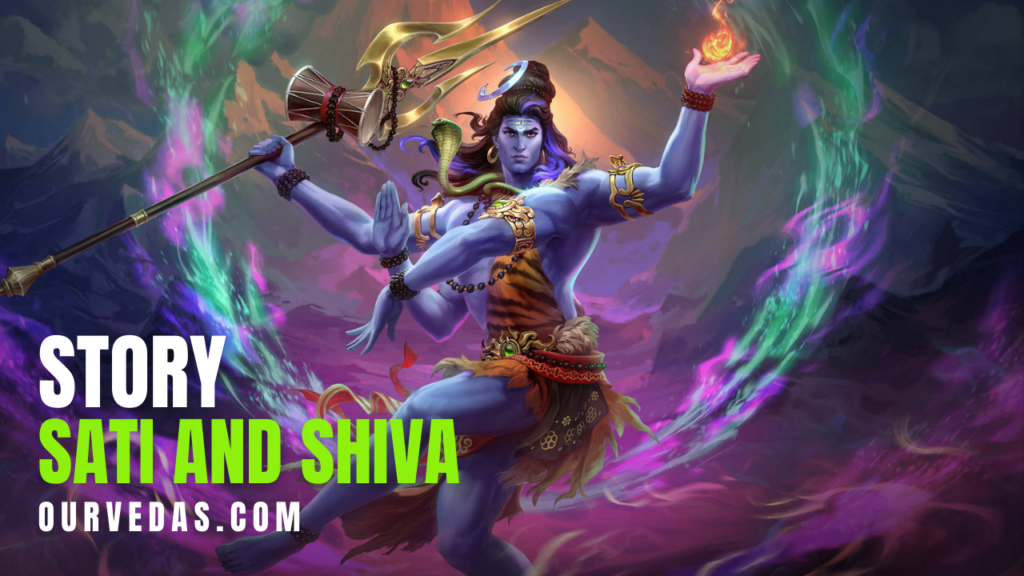
In this article, we will explore the roots of Sati and Shiva love story.
Who was Sati?
Sati, also known as Dakshayani, is one of the manifestations of the divine feminine in Hindu mythology. She was the daughter of Daksha Prajapati, one of the mind-born sons of Brahma, tasked with populating the universe and ensuring the continuation of creation.
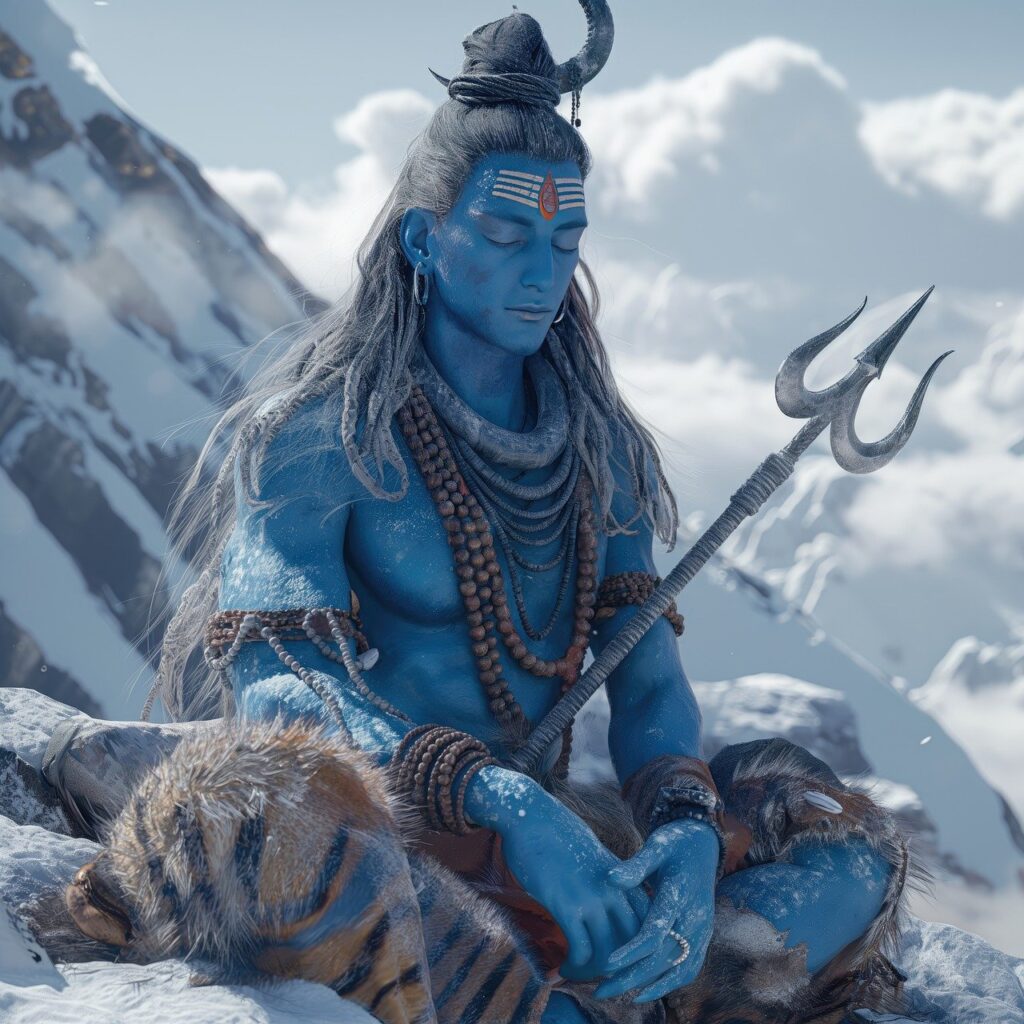
Daksha was a powerful king who laid down the rules so that humans could be civilized. He had a strong disdain for Shiva due to his uncivilized lifestyle. He was prejudiced against Shiva’s ascetic lifestyle and unconventional ways. Shiva meditated on cremation grounds. He was often accompanied by lower beings like Prets and Ganas, whom Shiva accepted as those who worshipped him.
Daksha represents the societal rules and moral codes that govern human behavior. Daksha believed that rules and ethics were important to maintain order and discipline in the civilization. However, Shiva didn’t follow any rules. He was often immersed in his spiritual practices. When his practices peaked, he used to dance in esctacy. Daksha was particularly disdainful of Shiva’s ascetic nature, and his disregard for worldly pleasures.
Daksha’s daughter Sati was known for her grace, beauty, and strength of character. Sati fell deeply in love with Shiva despite her father’s disdain for him.
The Forbidden Love – Sati and Shiva love story
Sati and Shiva love story faced various societal challenges. Daksha held a deep-seated hatred toward Shiva. To him, Shiva was an unsuitable match for his daughter.
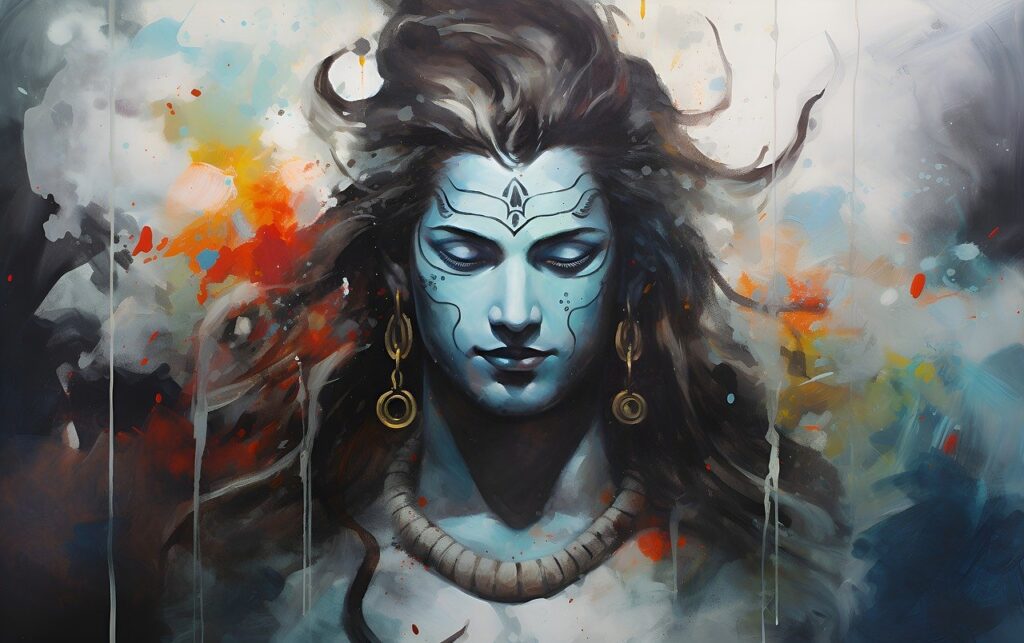
Sati was determined to be with Shiva. She performed intense penance to win Shiva’s heart. She faced many difficulties and challenges from her father, but her devotion to Shiva was unwavering. Her commitment eventually led to their union. Shiva was very pleased by Sati’s devotion, and he was ready to accept her as his wife.
When Sati expressed her desire to marry Shiva, her father was furious. But he was unable to change her mind.
The marriage of Sati and Shiva
Sati and Shiva had a grand wedding. Gods and Goddesses came to bless their union. However, Sati’s father, Daksha, opposed their union.
Sati wore exquisite garments, her radiant jewelry heightening her beauty. She looked graceful. Shiva arrived in a manner that was both awe-inspiring and unconventional.
His appearance was intriguing. With matted hair and ash smeared all over his body, he looked quite rough. His neck was adorned with serpents and flowers. Despite his rough appearance, a calm and intense aura surrounded him.
As the ceremony began, the atmosphere filled with joyous chants. The gods and goddesses participated in the rituals and blessed the couple.
The Yagna of Daksha
The story takes an interesting turn when Daksha decides to perform a grand yagna, a ritualistic offering to the gods. He invites everyone except Shiva to the yagna.
This was his deliberate act of insult for Shiva. He had also deliberately insulted Shiva several times earlier. Sati, driven by love and concern for her husband, decided to attend the yagna despite knowing that her father would likely express contempt for Shiva.
Upon arriving at the yagna, Sati initially hoped that her presence would mend the rift between her father and her husband. However, her hopes were dashed as she faced humiliation and scorn from Daksha and the assembled guests. Daksha insulted Shiva in front of all the guests, leaving Sati heartbroken and filled with grief.
In a fit of despair, feeling trapped between her father’s wrath and her love for Shiva, Sati decided to end her life. She invoked her divine energy and self-immolated in the sacrificial fire of the yagna. This left the whole assembly in shock and despair.
Shiva’s Grief and Fury
The news of Sati’s death reached Shiva like wildfire. When Shiva learned about the events at Daksha’s yagna, it shattered his heart.
Driver by anger, Shiva started performing Tandava, the dance of destruction. His dance was so powerful that its energy shocked the whole universe and caused an imbalance.
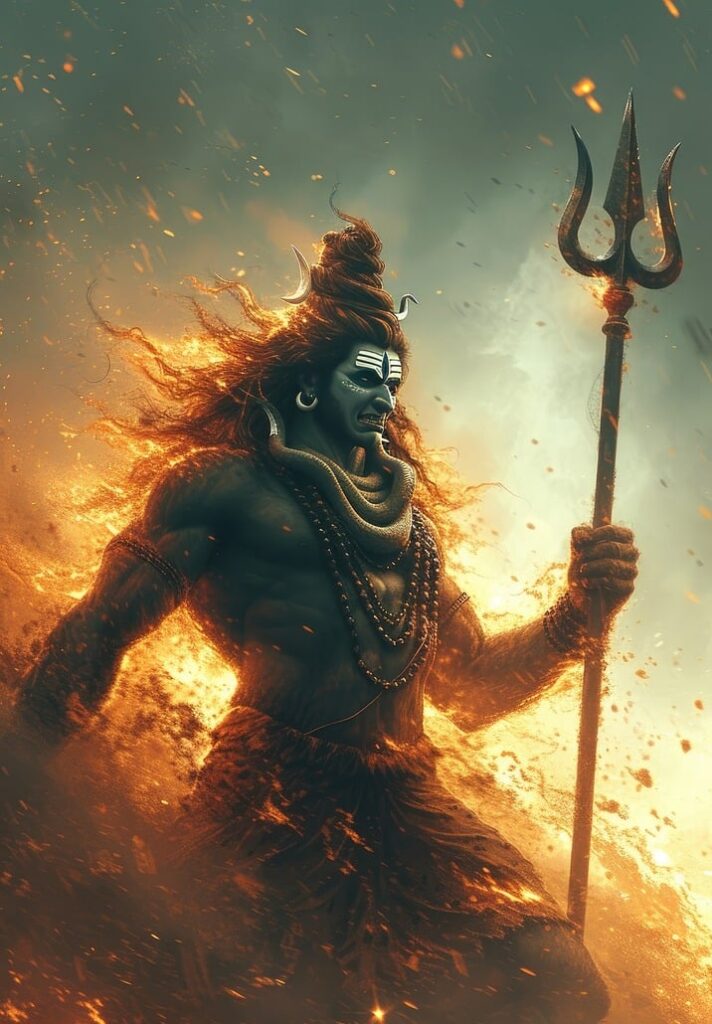
In his sorrow, Shiva’s ferocity knew no bounds. He set out to destroy Daksha’s yagna. Shiva is always forgiveful, but the loss of Sati ignited vengeance against all those who dishonored Sati.
When he arrived at the yagna site, his appearance sent shockwaves through the crowd. He was accompanied by his fierce companions, the Bhairavas and Bhadrakalis, who signaled the impending wrath that would befall Daksha and the attendees.
Shiva disrupted the yagna, causing havoc with his Trishul. He decapitated Daksha for his role in Sati’s death. Shiva’s loss was so grave that Daksha’s death couldn’t calm him down. He kept performing Tandava, and nobody dared to interrupt him. He kept destroying everything that came next to him.
Resurrection and Rebirth
The havoc caused by Shiva worried all the Gods and Goddesses. The sustenance of life was in danger. The deities, recognizing the chaos that had incurred, went to Lord Vishnu, the preserver. They prayed to him to calm down Shiva and restore balance to the universe.
Lord Vishnu suggested to bring Sati back to life. However, to maintain the equilibrium of creation and destruction, a compromise was made. Sati would be reborn as Parvati, the daughter of Himavan, the king of the mountains.
In her new incarnation as Parvati, she was destined to rekindle her love for Shiva. Unaware of her previous life, Parvati carried within her the memories and essence of Sati’s devotion.
As the Gods had decided, Parvati was born to Himavan. Since her childhood, Parvati had a strong attraction towards Shiva. She worshipped Shiva. Over time, with the help of the Gods, she was instructed to win Shiva’s heart.
Parvati performed severe penance to win Shiva’s heart. Parvati’s stalwart commitment and pure prayers eventually caught Shiva’s attention. In the beginning, Shiva tested her through various trials. Each time, Parvati’s devotion overcame all the challenges that Shiva presented to her. Parvati’s determination to unite with Shiva ultimately won his heart, and he accepted her as his wife. Parvati’s love calmed Shiva’s anger.
The Union of Shiva and Parvati at Triyuginarayan Temple
The gods decided on a beautiful place for Shiva and Parvati’s marriage. It was a grand marriage with all the Gods and Goddesses as guests. The flames of the fire from Shiva’s marriage continue to this day.
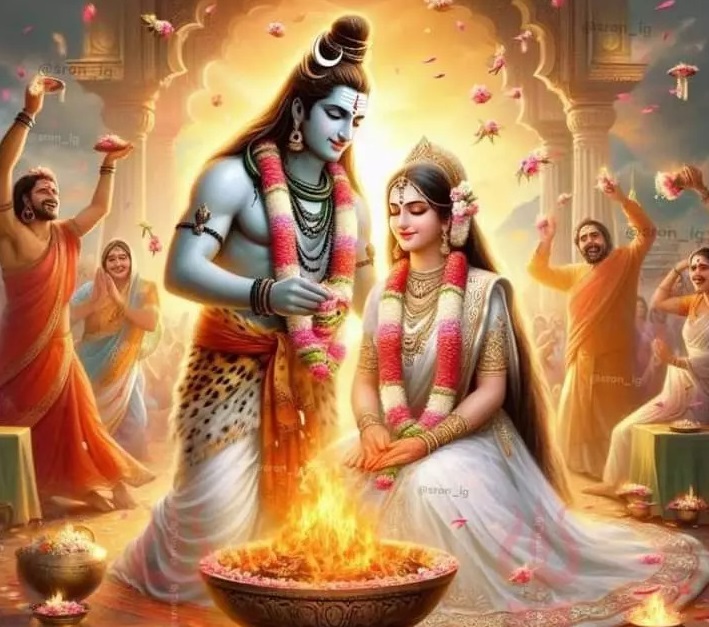
Sati and Shiva love story is celebrated worldwide today. The site where Shiva and Parvati married is located in the Uttarakhand district of India. There is a temple popularly known as Triyuginarayan temple. Each year, millions of devotees visit the Triyuginarayan temple to celebrate the union of Shiva and Sati.
The temple is situated near the sacred site of Kedarnath. With breathtaking views of the Himalayas, it mesmerizes each visitor. The temple is named after the three (Tri) Yugas (ages)—Satya Yuga, Treta Yuga, and Dvapara Yuga—indicating its timeless significance.
Lessons from Sati and Shiva Love Story
Sati and Shiva love story teaches us some evergreen lessons. It teaches us the power of true love, faith, and commitment. After a series of trials, Shiva recognized Parvati’s pure love for him, which motivates us not to give up hope and perform our Karmas in difficult times.
- It reflects the complexities of love and the repercussions of pride. Daksha’s pride ultimately made him lose his life. Several key lessons can be drawn from this saga:
- You can win God only by Devotion: Time and again, it has been told that God only sees devotion. Sati’s pure devotion overcame all the challenges posed by his father and ultimately led to God.
- The dynamics of this tale show the trials and tests faced by romantic relationships. It underscores the need for understanding and acceptance, keeping our egos aside.
- The Power of Feminine Energy: Sati’s and later Parvati’s journey shows the strength of feminine energy in the universe. When no one was able to calm Shiva, Sati’s devotion soothed Shiva and brought back cosmic balance.
- Shiva embodies the duality of creation and destruction. This story prominently underlines the significance of balance in nature.
- The cycle of life, death, and rebirth is a central theme in Hindu philosophy. We often recommend Bhagavad Geeta’s concept of Atman to illustrate the cyclic nature of life. However, this story itself reminds us of this.
- The story indicates the interconnectedness of all beings. Every action, whether personal or divine, reverberates through the cosmos. Shiva’s Tandava caused an imbalance in the whole universe. In the same manner, our energies also affect the universe. The difference is only that our energies are less potent.
Read: Teachings by Krishna in Mahabharata
Conclusion
Sati and Shiva love story is more than just a tale; it is a beautiful narrative of the laws of nature and the relationship between man and the divine.
This saga has a special place in the hearts of believers and admirers of Hindu philosophy.
In many ways, the legacy of Sati and Shiva continues to inspire many of us to embrace devotion and recognize the divine presence in their lives.
FAQs
What was the relationship between Shiva and Sati?
Sati, also known as Dakshayani, was the daughter of King Daksha Prajapati. She fell deeply in love with Shiva, whom her father disapproved of due to his ascetic nature and unconventional lifestyle.
How was Parvati different from Sati?
Sati’s primary role revolves around her love for Shiva and her tragic end. In contrast, Parvati’s role expands as she marries Shiva, becoming the mother of Ganesha and Kartikeya, and is involved in numerous mythological stories that emphasize her wisdom, strength, and strength of character.
How many wives Shiva had?
Lord Shiva is traditionally known to have several consorts, the most prominent of whom are Sati and Parvati.
Why Shiva has a garland of skulls around his neck?
It is often interpreted as a representation of the cycles of life and death, highlighting the transient nature of life. It is said that these are the skulls of his wife each time she took birth.
Read: Panchtatva mantra Guide

